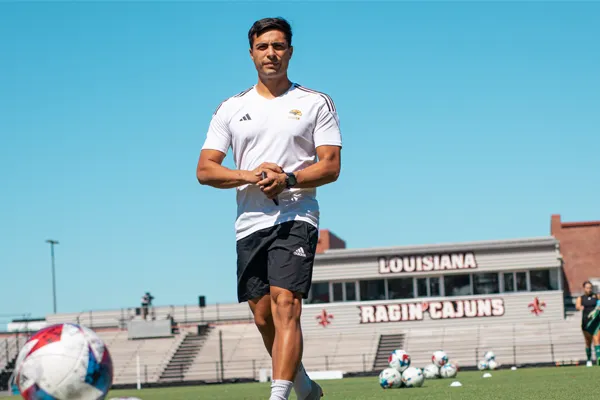
My Methodology: From Technical Foundations to Live Game Impact
My Methodology: From Technical Foundations to Live Game Impact

When I build a goalkeeper session, I don’t think in isolated drills or highlight saves. I think in layers, in progressions, in purpose. Because for me, training isn’t about making a session look good… it’s about making it mean something.
Let me take you inside how I structure a goalkeeper session and, more importantly, why I do it this way.
Starting with Purpose: Warm-Up With Intent

Every session starts with a warm-up, but not just to raise body temperature. For me, it’s a chance to connect the goalkeeper with their body and their focus. I like to build in movement patterns, light technical touches, and small coordination challenges that hint at what’s coming in the session. It sets the tempo. It connects the brain with the task.
From Technical Guidance to Active Repetition

In the warm-up, we get into technical work. But I keep these blocks short and sharp. Why? Because technique needs guidance, not boredom. It’s here where I give cues, refine shapes, and clean up habits. Whether we’re focusing on footwork, handling, or low diving. The duration depends on the topic and, honestly, on the energy I want to generate.
Sometimes we stay calm and focused. Other times, I push tempo, raise the volume, and demand speed.
But always, there’s a point where repetition kicks in. That’s when the movements start to feel automatic. That’s when confidence starts to grow.
Transitioning Into Live Scenarios

Then we get into what I call “pure scenarios.” Game-like, decision-heavy, messy—but incredibly valuable. I want my goalkeepers involved, not just standing between the posts waiting for a shot.
Whether it’s saving, passing, blocking, or restarting play, I want them active. I want them competing. In some tasks, every keeper is part of the play, either directly or through recovery actions. That’s the closest we get to match reality and that’s where growth really happens.
Adapting to Time: Making Every Minute Count

Now let’s be real, not every day is perfect. Sometimes, you’ve got 20 minutes. Sometimes less. And that’s okay.
In those moments, I often go heavier on technical guidance. If I know they’ll be joining a team drill like a 5v5 game right after, then my focus is on sharpening key actions they’ll actually use in that environment. I don’t get frustrated about it. I see it as a huge opportunity.
There’s no better context than live football with field players. The chaos, the unpredictability, the intensity… that’s gold. If I can prep my goalkeeper to step into that with clarity and confidence, I’ve done my job.
Final Thoughts: Real Training, Real Impact
This methodology isn’t about routines it’s about connection. Connecting the drill to the game. The technique to the moment. The goalkeeper to their role. Whether it’s 60 minutes or 15, my goal is always the same: make them better, in the game that matters.
So next time you design a session, think bigger than cones and commands. Think about the game. Think about the keeper. And build from there.